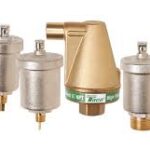In modern automotive and industrial engines, proper air flow is crucial for optimal performance, fuel efficiency, and reduced emissions. One of the key components responsible for regulating airflow into an engine is the air intake valve. By controlling the amount and timing of air entering the combustion chamber, air intake valves ensure efficient combustion, better throttle response, and overall engine longevity.
This article explores the function, types, applications, maintenance, and benefits of air intake valves in both automotive and industrial engines.
What Is an Air Intake Valve?
An air intake valve is a mechanical device that opens and closes at precise intervals to allow air to enter the engine’s combustion chamber. The amount of air entering the chamber directly impacts the air-fuel mixture, combustion efficiency, and engine performance.
Air intake valves are essential components of an internal combustion engine and work in conjunction with:
- Exhaust valves
- Camshaft
- Throttle body
- Fuel injection system
Proper functioning of the air intake valve is critical for engine power, efficiency, and emission control.
How an Air Intake Valve Works
The air intake valve operates in sync with the engine’s camshaft and crankshaft. Here’s a step-by-step breakdown of its operation:
- Opening Phase: During the intake stroke, the camshaft rotates, pushing the intake valve open. This allows fresh air to flow into the combustion chamber.
- Air-Fuel Mixing: Air mixes with fuel (via fuel injectors or carburetors) to form a combustible mixture.
- Closing Phase: The intake valve closes as the piston moves upward for the compression stroke, sealing the chamber for efficient combustion.
- Cycle Repeats: The engine continuously repeats this intake, compression, combustion, and exhaust cycle for smooth operation.
Precise timing of the intake valve is critical to avoid engine knocking, misfires, and reduced efficiency.
Types of Air Intake Valves
1. Conventional Intake Valves
- Standard valves made of steel or titanium alloys.
- Operated by a camshaft through lifters and pushrods.
- Common in older engines and standard automotive applications.
2. Variable Valve Timing (VVT) Intake Valves
- Integrated with variable valve timing technology.
- Adjusts valve opening and closing based on engine speed and load.
- Improves fuel efficiency, power output, and reduces emissions.
3. Pneumatic Intake Valves
- Used in high-performance and racing engines.
- Operated by air pressure instead of mechanical camshafts.
- Allows extremely high engine speeds with precise valve control.
4. Multi-Valve Intake Systems
- Engines with 3–5 intake valves per cylinder.
- Increase airflow and combustion efficiency.
- Enhance power output and responsiveness at high RPMs.
Applications of Air Intake Valves
1. Automotive Engines
Air intake valves are critical in cars, trucks, and motorcycles. They regulate airflow to optimize power, torque, fuel consumption, and emission standards.
2. Industrial Engines
Generators, compressors, and pumps rely on air intake valves for efficient combustion and engine performance under continuous operation.
3. Marine Engines
Marine diesel and petrol engines use air intake valves to maintain consistent power and reliability in harsh conditions.
4. Aviation Engines
Piston-driven aircraft engines rely on precisely tuned intake valves to ensure efficient combustion and altitude performance.
5. Performance and Racing Vehicles
High-performance engines utilize advanced intake valves like variable timing, multi-valve setups, and lightweight materials for maximum efficiency and RPM performance.
Key Components of an Air Intake Valve
- Valve Head: The flat or slightly convex surface that seals the combustion chamber.
- Valve Stem: A cylindrical shaft connecting the valve head to the rocker arm or cam mechanism.
- Valve Seat: A precise surface in the cylinder head where the valve head seals.
- Valve Spring: Keeps the valve closed when not actuated.
- Retainers and Keepers: Secure the valve spring to maintain proper tension.
All these components work together to ensure airtight sealing, accurate timing, and long-term durability.
Benefits of Properly Functioning Air Intake Valves
1. Enhanced Engine Performance
Efficient air intake improves combustion, leading to higher horsepower, torque, and overall responsiveness.
2. Better Fuel Efficiency
Optimal air-fuel mixture ensures more complete combustion, reducing fuel consumption.
3. Reduced Emissions
Precise air control reduces unburned fuel and harmful emissions, helping engines meet environmental regulations.
4. Longevity of Engine Components
Proper airflow prevents knocking, overheating, and premature wear on pistons, valves, and cylinder walls.
5. Smooth Operation
Air intake valves contribute to stable idle, consistent acceleration, and overall engine smoothness.
Maintenance Tips for Air Intake Valves
- Regular Cleaning: Carbon deposits can build up on intake valves, especially in direct-injection engines. Use fuel additives or professional cleaning techniques.
- Valve Adjustment: Periodic adjustment of valve clearance ensures proper timing and prevents misfires or poor performance.
- Inspection of Springs and Seats: Worn valve springs or seats reduce efficiency and may cause leakage. Inspect and replace if necessary.
- Check for Wear and Damage: Look for cracks, corrosion, or pitting on the valve head and stem.
- Fuel Quality: Using high-quality fuel reduces carbon buildup and extends valve life.
Proper maintenance prolongs engine life and maintains optimal performance.
Common Issues with Air Intake Valves
1. Carbon Buildup
Direct injection engines often experience carbon deposits on intake valves, restricting airflow.
2. Valve Sticking
Deposits, wear, or lack of lubrication can cause valves to stick, affecting engine performance.
3. Burnt Valves
Overheating or improper combustion can damage the valve head or seat, causing leakage and reduced compression.
4. Noise
Rattling or tapping noises may indicate valve wear, weak springs, or improper adjustment.
5. Engine Misfires
Faulty or worn intake valves can disrupt the air-fuel mixture, leading to misfires and reduced efficiency.
Emerging Trends in Air Intake Valve Technology

1. Variable Valve Timing and Lift
Advanced VVT systems optimize intake valve timing for different engine speeds and loads, improving efficiency and performance.
2. Lightweight Materials
Titanium and high-strength alloys reduce valve weight, allowing higher RPMs and improved engine response.
3. Electronic Valve Actuation
Electro-hydraulic or fully electronic intake valves remove the need for mechanical camshafts, allowing precise control and fuel savings.
4. Multi-Valve Configurations
Increasing the number of intake valves per cylinder improves airflow, combustion efficiency, and power output.
5. Advanced Coatings
Anti-carbon and thermal barrier coatings prevent deposits, improve heat resistance, and extend valve lifespan.
Conclusion
The air intake valve is a critical component in any internal combustion engine, ensuring proper airflow, combustion efficiency, and overall engine performance. From standard automotive engines to high-performance racing setups, industrial generators, and marine engines, intake valves regulate the air entering the combustion chamber for optimal results.
Proper design, material selection, and maintenance of air intake valves lead to enhanced power, fuel efficiency, reduced emissions, and longer engine life. With ongoing advancements like variable valve timing, electronic actuation, and carbon-resistant coatings, air intake valves continue to evolve, making modern engines more efficient, powerful, and reliable than ever.





